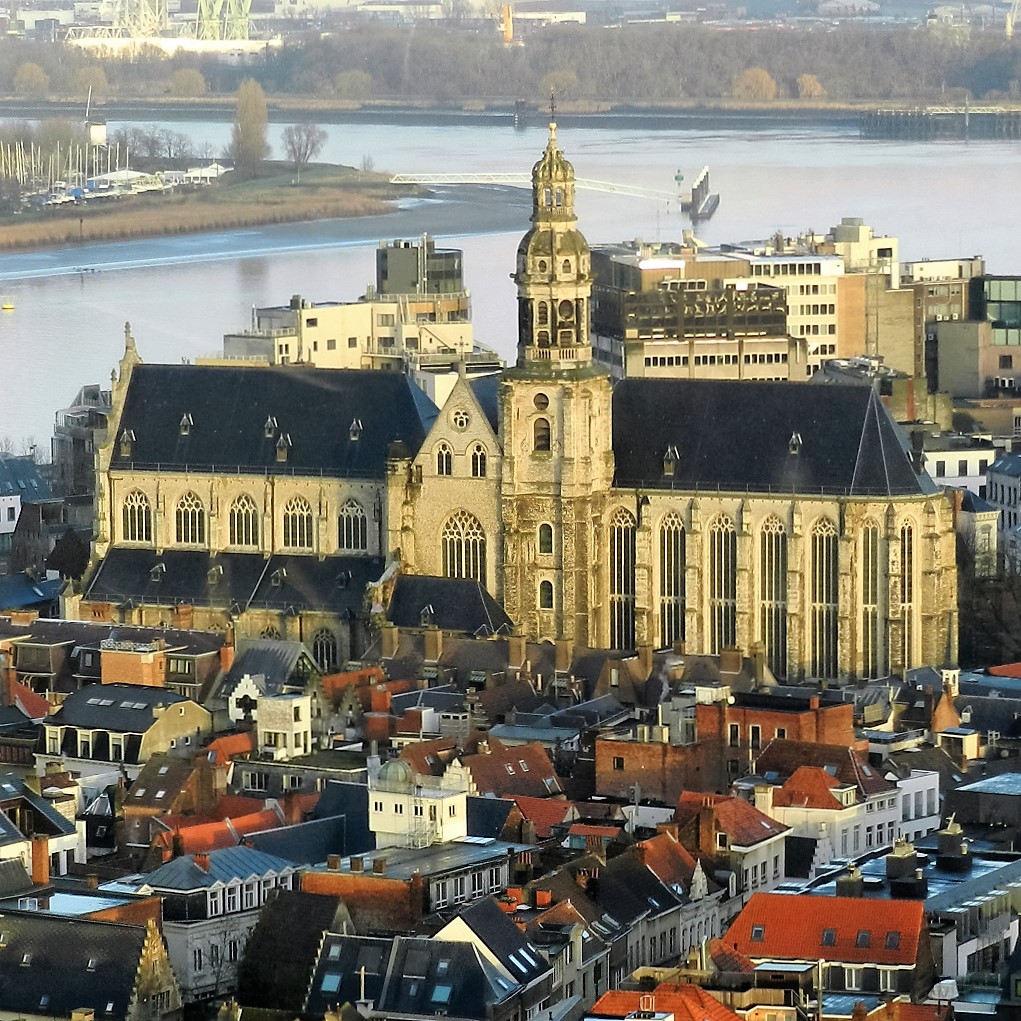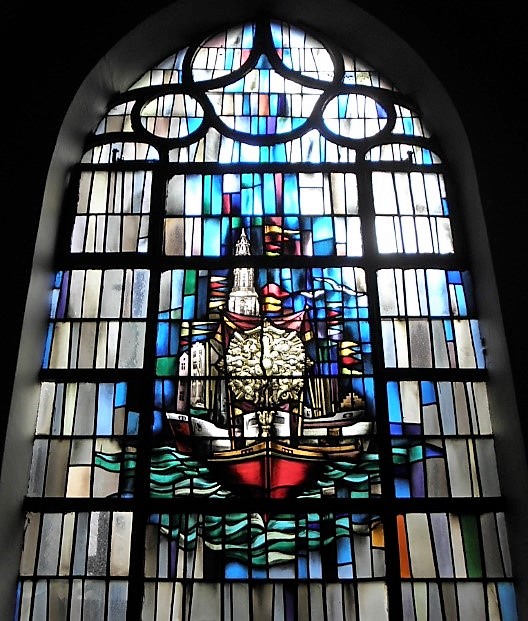Saint Paul’s, the Antwerp Dominican church, a revelation
The weekly chapel
First of all our attention is drawn by the large aluminium cross on a wooden frame behind the altarThe altar is the central piece of furniture used in the Eucharist. Originally, an altar used to be a sacrificial table. This fits in with the theological view that Jesus sacrificed himself, through his death on the cross, to redeem mankind, as symbolically depicted in the painting “The Adoration of the Lamb” by the Van Eyck brothers. In modern times the altar is often described as “the table of the Lord”. Here the altar refers to the table at which Jesus and his disciples were seated at the institution of the Eucharist during the Last Supper. Just as Jesus and his disciples did then, the priest and the faithful gather around this table with bread and wine., that consists of six identical panels of the crucified Jesus. With this composition and with the poem that goes with it the versatile artist Charles Delporte (1977) wants to make clear that Christ’s death on the Cross is a continuously repeated act of love for mankind. So the background of these printed and painted aluminium sheets in red, black and gold is not cosmic without reason.
The first four stained glass windows (Marc De Groot, 1967-1970) honour Our Lady of the Rosary at the occasion of The Victory at Lepanto. To the annual procession of this feast also belong Paul, the Patron SaintThis is a title that the Church bestows on a deceased person who has lived a particularly righteous and faithful life. In the Roman Catholic and Orthodox Church, saints may be venerated (not worshipped). Several saints are also martyrs. and The Hallowing of the Scheldt, with a silhouette of Saint Paul’s church. Even now the brotherhood organizes the annual procession in Antwerp on the first Sunday of October.
The first of the last two stained glass windows (Herman Wauters) depicts The escutcheon of Autbertus van den Eede, bishopPriest in charge of a diocese. See also ‘archbishop’. of Antwerp (1677-1678) with his motto “Jure Jurando” (to swear under oath), which is an allusion to the name of the donator, Jos Van den Eede [eed(e) = oath]. The descent of the Holy SpiritThe active power of God in people. It inspires people to make God present in the world. Jesus was ‘filled with the Holy Spirit’ and thus showed in his speech and actions what God is like. People who allow the Holy Spirit to work in them also speak and act like God and Jesus at those moments. See also ‘Pentecost’. was made at the occasion of the bicentennial of the parish in 2003.
When the Christian story of the Stations of the Cross wants to be recognized in times of non-figurative art it needs a minimum of lines, as can be seen in these fourteen stations in Indian ink on plexiglass (Charles Delporte, 1979).
The stone statue Mary with Child (J. Williame, 1964) looks very much like a traditional “Throne of Wisdom”, which shows the Child sitting enthroned on Mary.


